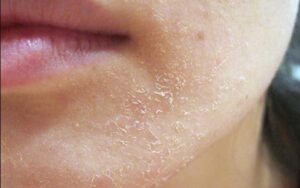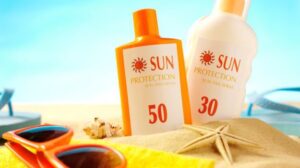Moisturizers help prevent and treat dry skin, protect sensitive skin, improve skin texture and conceal imperfections. However, you need to try a few different moisturizer products to find the right moisturizer for you.
1.Instructions on how to choose a moisturizer
At the most basic level, moisturizers hold water in the outermost layer of the skin. Most types of moisturizers are water-based lotions, creams, gels, and serums. These products contain ingredients that attract water to the skin (humectants) – such as glycerin, lactic acid or urea and other ingredients that smooth the skin (emollients) such as lanolin, sunflower oil and jojoba oil.
You may want to try different moisturizers to find ones that work for your skin type. You may decide to use one cream for your eyes and neck and another lotion for the rest of your body. You may also want to choose moisturizers that are easy to use and don’t leave white streaks lingering on your skin.
The type of moisturizer that’s good for you depends on many factors, including your skin type, age, and whether you have a specific medical condition, such as acne. Consider the following to choose the right product:
- Normal skin: Normal skin is neither too dry nor too oily. To maintain this natural moisture balance, use a water-based moisturizer with a light, non-greasy feel. These moisturizers often contain lightweight oils or silicone-derived ingredients, such as cyclomethicone.

- Dry skin: Dry skin tends to be flaky, itchy, or rough. To restore moisture to dry skin, choose a stronger, oil-based moisturizer that contains ingredients that help retain water. If you’ve tried moisturizers but still feel dry, especially in your legs, feet, arms and hands, look for products that contain lactic acid or lactic acid and urea.
- For very dry and chapped skin: look for an ointment with petroleum jelly (Vaseline, Aquaphor). These products stay on the skin longer than other types of lotions and are more effective in reducing water loss from the skin. If this type of product is too greasy to use during the day, use it when you go to bed.
- Oily skin: Oily skin is shiny, greasy, and prone to acne. Oily skin still needs moisture, especially after using skin care products that strip away oil and dry out the skin. A light moisturizer can also help protect your skin after washing your face. Skin care products often contain a higher percentage of water than creams, are easier to apply, and are less likely to aggravate acne-prone skin. You should choose a gentle, water-based product that is labeled oil-free or hypoallergenic, which means it won’t clog pores. If you are prone to acne, avoid using facial products that contain petroleum jelly, cocoa butter or coconut oil. If your skin is very oily, try using sunscreen instead of moisturizer.
- Combination skin: Combination skin has areas of dry and oily skin. For example, the forehead, nose or chin may be oily, but the cheeks are dry. Try a medium-weight moisturizer combined with a broad-spectrum sunscreen. Or use a light moisturizer on your face and a heavier one on your arms and legs.

- Sensitive skin: Sensitive skin is susceptible to irritation, redness, itching, or rashes. Look for a moisturizer that contains soothing ingredients, such as chamomile or aloe vera. Choose gentle products labeled as hypoallergenic, fragrance-free and for sensitive skin. Note that products labeled unscented can still irritate your skin, as they may contain masking fragrances. You should also avoid products that contain acids, which can irritate sensitive skin.
- Aging skin: As you age, your skin tends to become thinner, drier, less elastic and less able to protect itself against damage. To keep your skin soft and hydrated, choose an oil-based moisturizer with petroleum jelly to help seal in moisture. Moisturizing can help reduce wrinkles and make them less visible.
To prevent peeling and scaly skin, you can choose products that contain antioxidants or alpha hydroxy acids. Moisturizers are often the base of anti-wrinkle creams, with added retinoids, antioxidants, peptides or other ingredients.
2. How to use moisturization for maximum effectiveness

Establish a simple skin care routine and use it regularly along with a regular moisturizer:
- You should find a moisturizer that suits your skin type and makes your skin softer. You may need to try a few different products and with different ingredients before finding the one that works for you.
- Protect your skin from sunlight. Apply sunscreen every day and year-round. Use a broad-spectrum sunscreen with an SPF of 30 or higher. Reapply every two hours and after swimming or sweating. You can choose a moisturizer or cosmetic that contains sunscreen.
- It is not necessary to buy expensive brands. Just because a moisturizer is expensive doesn’t mean it’s more effective than a lower priced product. Many of the ingredients added to these expensive brands are of questionable value and may include perfumes, dyes or other ingredients that do not help moisturize and protect the skin.
- Wash regularly and gently. Wash your face every day and after sweating. Use warm water and a gentle cleanser, or just use water. When bathing, avoid using loofahs and pumice stones. Use fragrance-free shower oils and mild soaps or shower gels with added moisturizer. Wash skin after using these products. Limit bathing to no more than once a day and do not bathe for more than 5 to 10 minutes.
- Apply moisturizer while skin is still damp. After showering or shaving, dry your skin with a towel to retain moisture. Then apply moisturizer to help retain water in the skin. Depending on your skin type, you may want to reapply your moisturizer two to three times a day, or more often as needed. Moisturize your hands every time you wash them.
- Use heavy moisturizers and appropriate oils. Don’t use heavy moisturizers on your face unless you’re extremely dry. You can use baby oil or heavy moisturizers on your hands and feet, as these areas tend to be drier.
- Apply moisturizer after using the cream. If you use medicated creams such as corticosteroids or tacrolimus (Protopic), wait at least 30 minutes before applying moisturizer. Check the medication package insert for specific instructions.
If moisturizing regularly doesn’t improve your skin condition or you discover new skin problems, see your doctor or dermatologist for an examination and advice.
Source: mayoclinic.org


